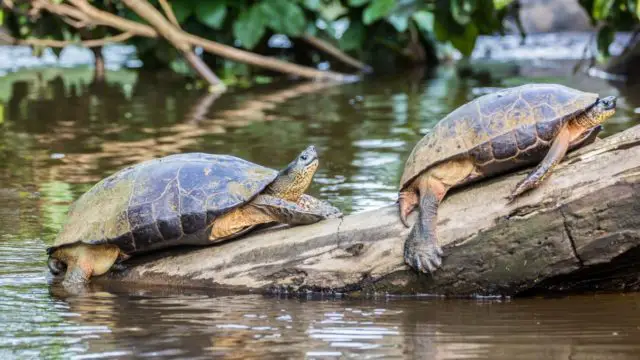Did you know that Costa Rica has the presence of 5 of the 7 known species of sea turtles on the planet? This is how our country is privileged with the arrival, nesting and spawning periodically, year after year and on both coasts of the green, leatherback, olive ridley, bighead and hawksbill turtles that never cease to amaze those national and international tourists who see them moving in huge numbers on some of our beaches, their breeding sanctuaries.
Precisely to expand this information and dozens of other educational curiosities about the magical turtles, the Costa Rican Institute of Tourism (ICT) developed, with the support of SINAC experts, the first infographic entitled: “Observation of Sea Turtles in Costa Rica”.
This novel and functional material is available to be downloaded on mobile devices and contains detailed, friendly illustrated data about the aforementioned species and their characteristics such as the scientific name, common name, shape of the head, type of carapace and plastron (anterior part or chest of the turtle), as well as the detail of its anatomy with the composition of its organs.
The infographic is generous in graphically illustrating beach nesting sites and includes a nesting calendar for Pacific species (green, olive ridley and leatherback turtles) and Caribbean species (leatherback, hawksbill and green turtles), as well as the nesting life cycle of these long-lived species.
A map of Costa Rica also stands out, which locates the 83 nesting sites on both coasts of these marine visitors who are usually seen in their natural state between May and January of each year.
Spreading the importance of sea turtles
For Mario Badilla, coordinator of the content of the infographic of the Tourism Development Department of the ICT, this effort generated more than an infographic, an instrument or a tool was created to spread the importance of sea turtles as a species in the natural and economic sphere due to their impact on the tourist communities of the country. “We invite you to explore and make the most of this infographic, designed to be within reach of national and international tourists, tour guides, biologists and other professionals in the tourism sector on mobile devices or tablets” concluded Badilla , who announced that the English version will be available to the public at the end of October.
Under the shell
According to the ICT, this infographic is the most extensive and detailed that has been carried out to date, including an in-depth “informative x-ray” of each of the species separately. This section details the shell shape, coloration, average weight and length of each species, provides limb characteristics, shows nesting periods, outlines the most common feared predators of eggs, hatchlings and adults. Complementarily, it shows in icons and always in extremely specific texts data about nesting dates, diet, mating, geographical location, conservation status and if it is at any risk of extinction, threats, age, sexual maturity, average clutch size and even the frequency of re-nesting.

Great biological diversity
“Costa Rica is a country of great biological diversity, both terrestrial and marine. This infographic synthesis of the 5 species of sea turtles allows to know extensive information in a pleasant way for the reader about the status of their populations, threats, nesting periods, as well as ecological biological details of our turtles that will allow us to expand our knowledge about their importance for marine ecosystems and human well-being. We have a great responsibility as a country for its conservation and we urge you so that when you visit the nesting sites you do so with the support of authorized guides and inform yourself about the good practices that we can carry out to reduce the impact when we are observing them”, explained Rotney Piedra, director of Protected Wilderness Areas of the Tempisque Conservation Area and SINAC sea turtle expert.
Finally, -according to the beginning of the infographic-, Costa Rica stands out in the world as one of the countries with more than 60 years in sea turtle conservation processes and also declared several protected areas with the conservation of turtle species in mind, such as the Tortuguero National Park, the Ostional Wildlife Refuge, the Las Baulas National Marine Park, and the Camaronal National Wildlife Refuge, among other beaches on both coasts.

